Whether you’re scuba diving in cold or warm water, in the sunny tropics, or the icy Arctic, being chilly on a dive is never fun.
As human beings, our body strives to maintain a constant core temperature of around 37°C (98.6°F). Any temperature above 38°C (100.4°F) is considered a fever and anything below 35°C (95°F) and our bodies are going into hypothermia. To maintain this homeostasis, our body balances heat loss and heat gain through activities such as exercise, convection, radiation, shivering, vasodilation, vasoconstriction and evaporation.
The rate at which a body cools varies from person to person based on body size, build, gender, age, body fat, cold tolerance, temperature and behavioral response. But regardless of the physical variances that dictate an individual’s cold-response, our bodies are not designed to be in the water for long periods of time.
In water, the body loses heat 25 times faster than it would when, exposed to air of the same temperature. So it stands to reason that regardless of being a cold water or warm water diver, if we don’t take the right steps to preserve our body temperature, we can, and will, get cold while scuba diving.
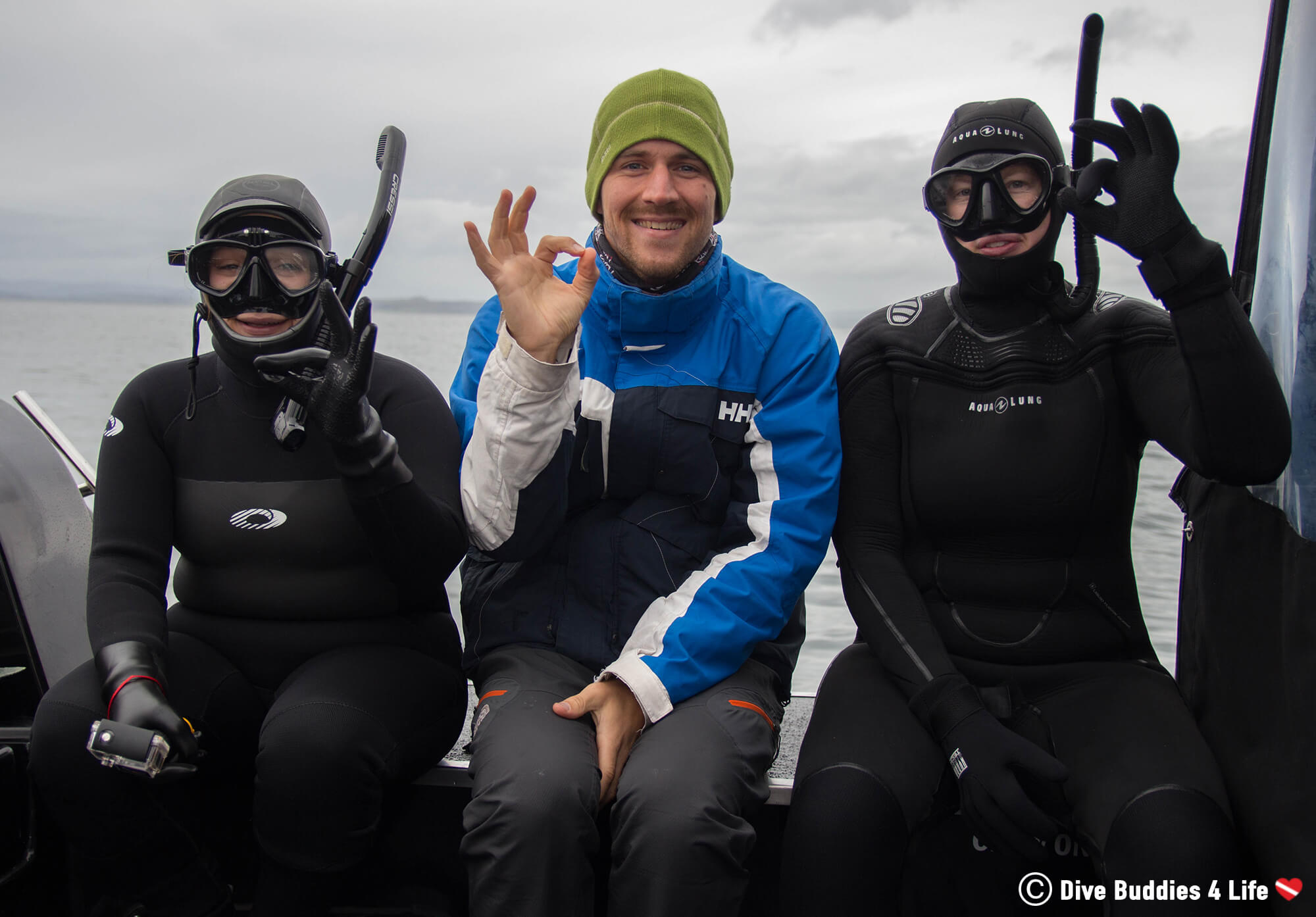
More than a mere discomfort, being cold not only eats away at the enjoyment of your dive, but it can also be physically exhausting and even a little dangerous.
Your body is constantly using energy to function, and heat is a form of energy. By depleting your energy stores to keep yourself warm, swimming against a current to reach the boat or climbing the ladder suddenly becomes more challenging. By letting yourself get cold, you are not just jeopardizing the current dive but also any repeated dives you hope to do and may require a prolonged surface interval (or need to skip the next dive altogether) in order to recover.
Being cold while scuba diving can also put you at risk of decompression sickness.
As a person gets cold their blood vessels undergo vasoconstriction, to help mitigate heat loss. This means that less blood circulates to the extremities and instead focuses on the core organs, the vital part of the body. Because of this constriction blood moves faster when it’s delivering nitrogen to your tissues and slower when it’s taking nitrogen away. Thus, it could take longer than predicted for nitrogen to off-gas from your body, leaving divers to carry a larger nitrogen load and have a greater risk of suffering from decompression sickness than they might realize.
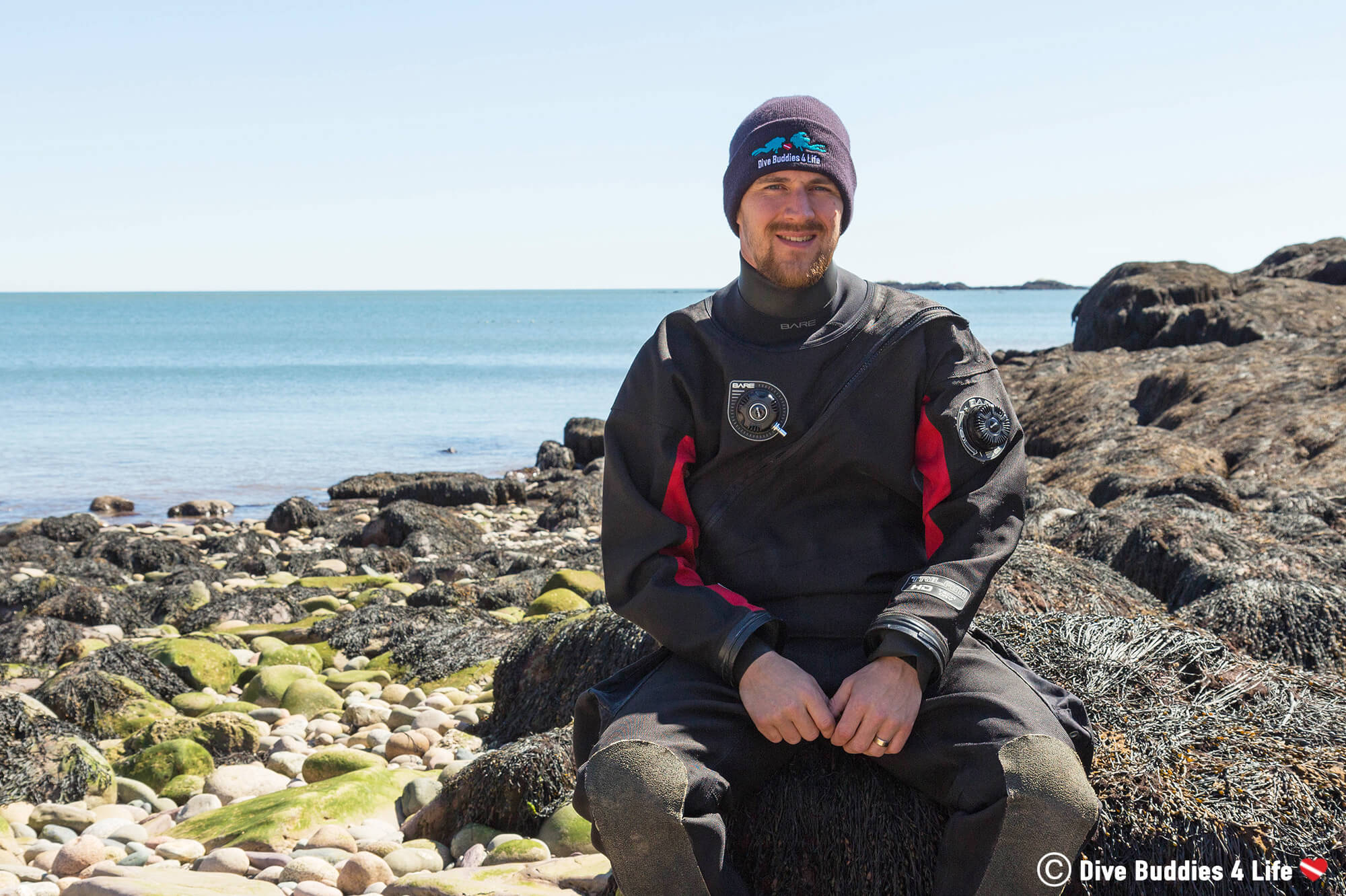
Keeping warm is relevant regardless of the location you are diving in, however, the tactics you use may vary widely from place to place.
It goes without saying that an exposure suit is the most critical piece of scuba diving gear to protect yourself against heat loss. The type of exposure suit a diver will use is dependent on the temperature of the water they will be diving in.
Generally speaking, a wetsuit is recommended for diving in water temperatures of 15°C (59°F) and above whereas a semi-dry or drysuits should be used for diving in water temperatures below this.
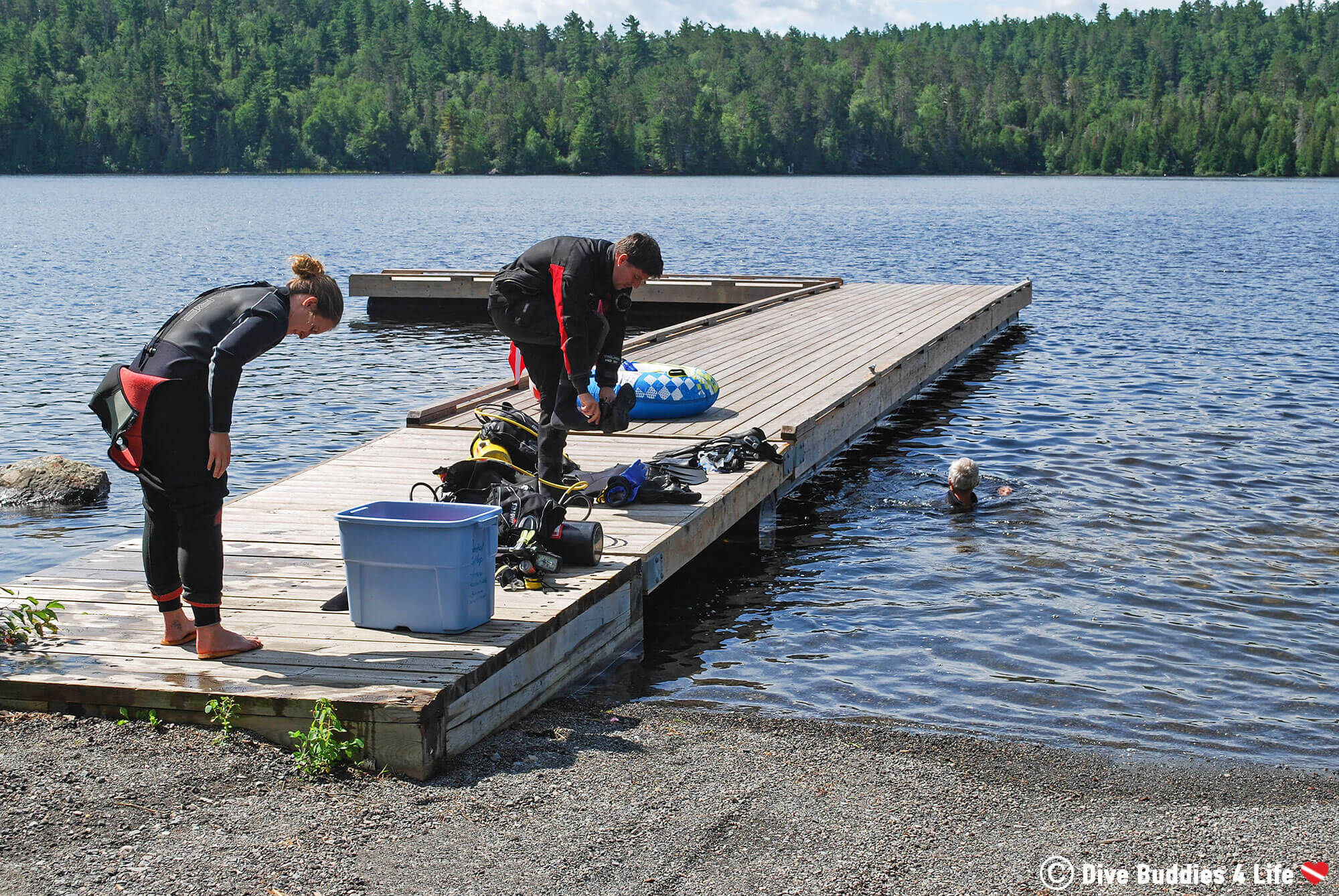
Wetsuits and Semi-Dry suits
Wetsuits and semi-dry suits are the most common type of exposure suit used in scuba diving, and a great option to stay warm in a wide variety of water temperatures. There is plenty of different thickness and styles to choose from ranging from shorties to 7mm farmer jane and john providing dual coverage on the diver’s core.
A few important considerations when thinking about wetsuits and semi-dry suits:
1. Correct Fit: Wetsuits and semi-drysuits work under the principle that upon entering the water the suit floods and the flooded water gets trapped between the neoprene layer and warms up against your body insulating against the external environment. The big difference is semi-drysuits are slightly more sophisticated in the seals of the neck, wrist and ankles in order to minimize water movement inside the suit. Having water consistently flushing in and out of your suit, is indicative of an ill fitting wetsuit or semi-dry and will reduce your overall body temperature throughout the dive. To ensure that your suit fits but is not restrictive, take the time to check if the zippers and seals are snug against your skin bearing in mind that once wet, everything will become a little looser. A good rule of thumb, if a wetsuit or semi-dry is easy to pull on, it’s probably too loose.
2. Neoprene Thickness: While it’s hard to generalize a good thickness for your exposure suit because sensitivity to cold varies from diver to diver a rough guideline is:
| Water Temperature | Average Diver | Diver Prone to Cold |
| 29°C (85°F) and above | dive skin or thin shorty | 1 mm full suit |
| 26-28°C (80 to 84°F) | dive skin or 2mm shorty | 1-2 mm full suit |
| 22-25°C (73 to 79°F) | 2-3 mm full suit | 3-5 mm full suit |
| 18-21°C (66 to 72°F) | 3-5 mm full suit | 5-7 mm full suit |
| 10-17°C (50 to 65°F) | 7mm wetsuit to semi-dry | drysuit or semi-dry |
| below 10°C (50°F) | semi-dry or drysuit | thick drysuit with heated undergarments |
Age of the Suit: Over time the neoprene that makes up your wetsuit can become less effective. As a suit gets older, the continual compression of the neoprene material and tiny bubbles inside its fabric can lessen its effectiveness at providing thermal insulation.
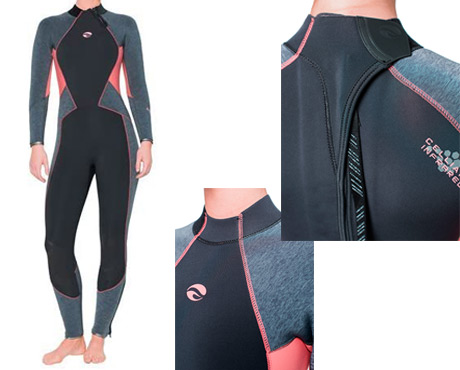
Our BARE wetsuits: Joey and I love our BARE 5mm reactive and BARE 5mm evoke (seen in photo) wetsuits. These suits are designed containing neoprene celliant liner infrared technology which reacts to body heat increasing circulation and body warmth.
Drysuit
Drysuits are a fantastic option for divers spending most of their time in cold water. As the name suggests, a drysuit seal at the neck and wrists, keeping you warm by keeping you dry. Beneath the drysuit, divers can customize their body temperature to fit the outer environment, by using layers of undergarments.
Without going into too much detail the two drysuit variations are trilaminate and neoprene. Trilaminate is a lightweight design drysuit having minimal buoyancy and minimal warmth meaning that divers need to layer up their undergarments. A neoprene drysuit is essentially a thicker waterproof wetsuit that is bulkier, more buoyant and warmer than its trilaminate counterpart.
It goes without saying that when drysuit diving it’s important to be “dry” so make sure the leaks are fixed in your suit. Some of the regions most prone to leaks include the neck and arm seals, the crotch and the valve locations.
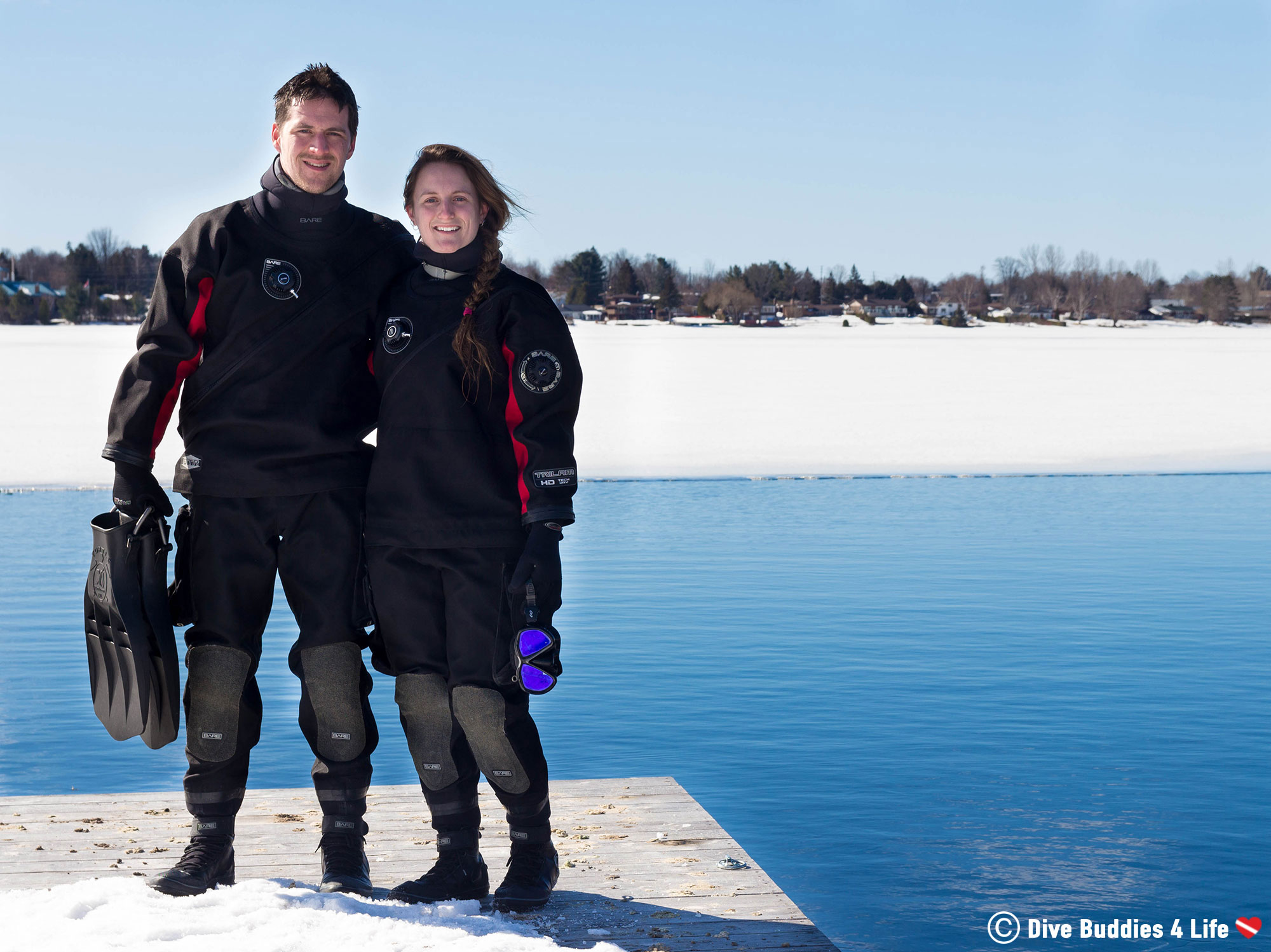
Layers are a scuba divers best friend when it comes to staying warm while underwater. Rashguards, dive skins and sharkskin are a good option to add underneath a wetsuit, with the latter offering significant warmth and no additional buoyancy. In a drysuit, divers want to opt for items with good wicking properties as a base layer (like merino wool) with thicker puffier polarwear or fleece jumper toward the extremity.
For additional heat and comfort underwater, there are heated vests and pant underlayers that can be added to a divers kit. Most heated apparel come with rechargeable battery packs and an external waterproof activation button that divers can use on the end part of the dive.
Why do you need an activation button? It is strongly recommended to only use heated apparel towards the end of a dive after you have reached the deepest point. Because a warm diver will absorb more nitrogen in their system than a cold diver, using the heated gear for the duration of the dive could result in a diver having excess nitrogen to off-gas should the batteries die or malfunction.
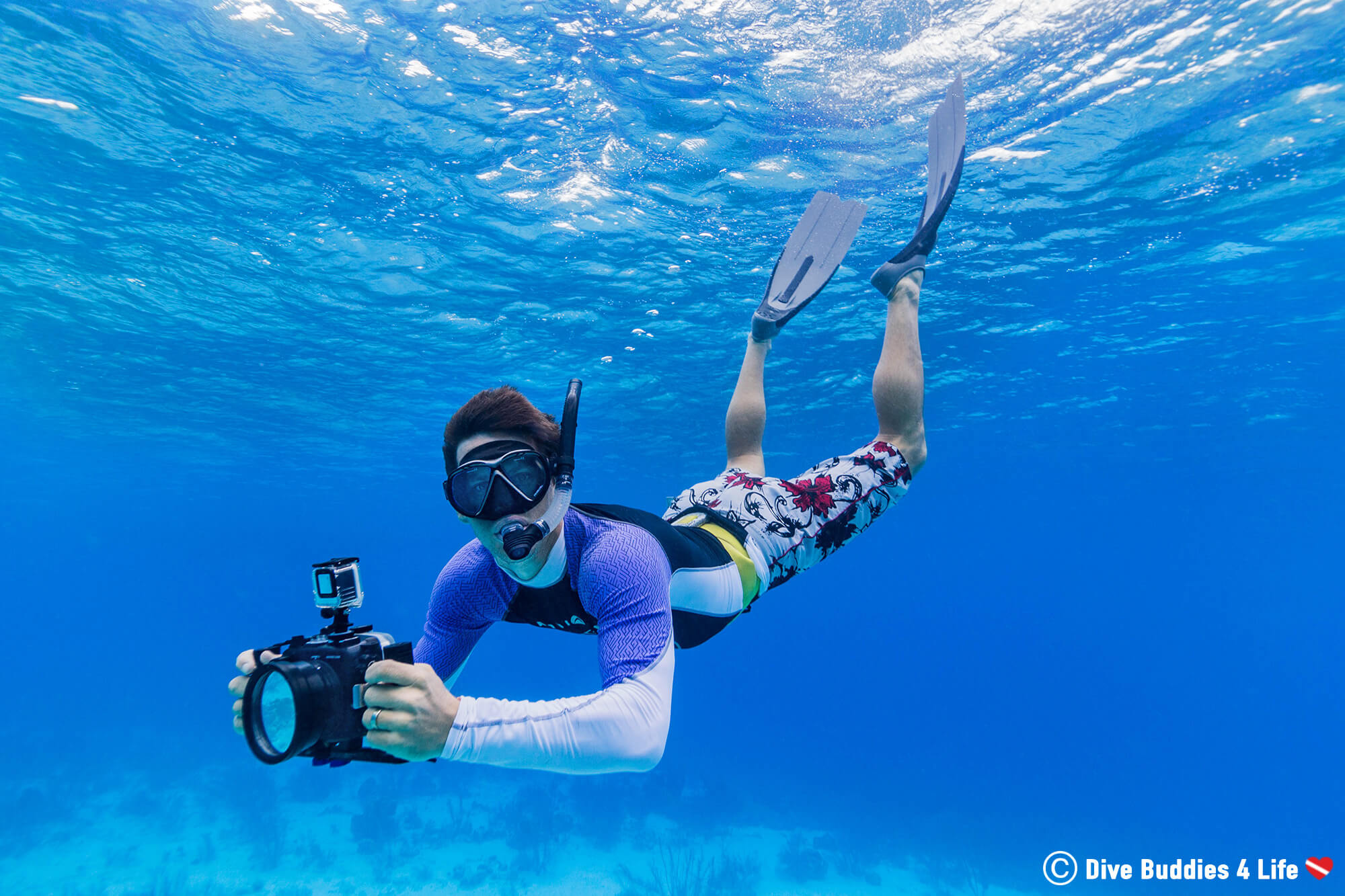
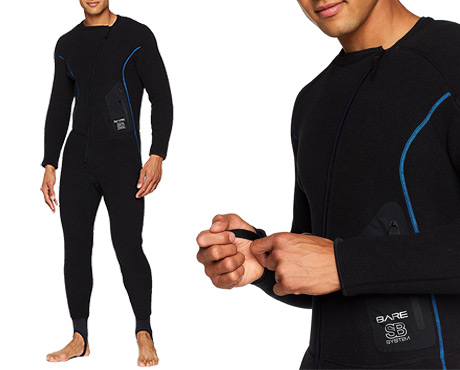
Fleecy Underlayers: We are always warm and cozy using our Bare SB Full Under-layer under our drysuits. The advanced stretch breathable compression-resistant fleece provides warmth without bulk.
Staying warm on a dive goes above and beyond just making sure you have the proper exposure suit. There are other parts of our bodies that need thermal protection. Divers also lose heat from their hands and head. In fact, according to the 2008 British Medical Journal, 7 to 10% of body heat is lost through your noggin. So in spite of its restrictiveness, it’s worth considering diving with a neoprene hood to help conserve heat escaping through your head.
Dexterity and fine motor movement in the hands can be important for inflating or deflating a BCD, hence a good pair of gloves is a smart option, especially on cold water dives. Neoprene gloves, or for cold water divers dry gloves, can be readily used to keep your hands warm. Neoprene gloves come in mitt, 3-finger and 5-finger configurations. When diving wet, try tucking your neoprene gloves beneath the wrist seal of your wetsuit to help limit water movement resulting in cold hands.
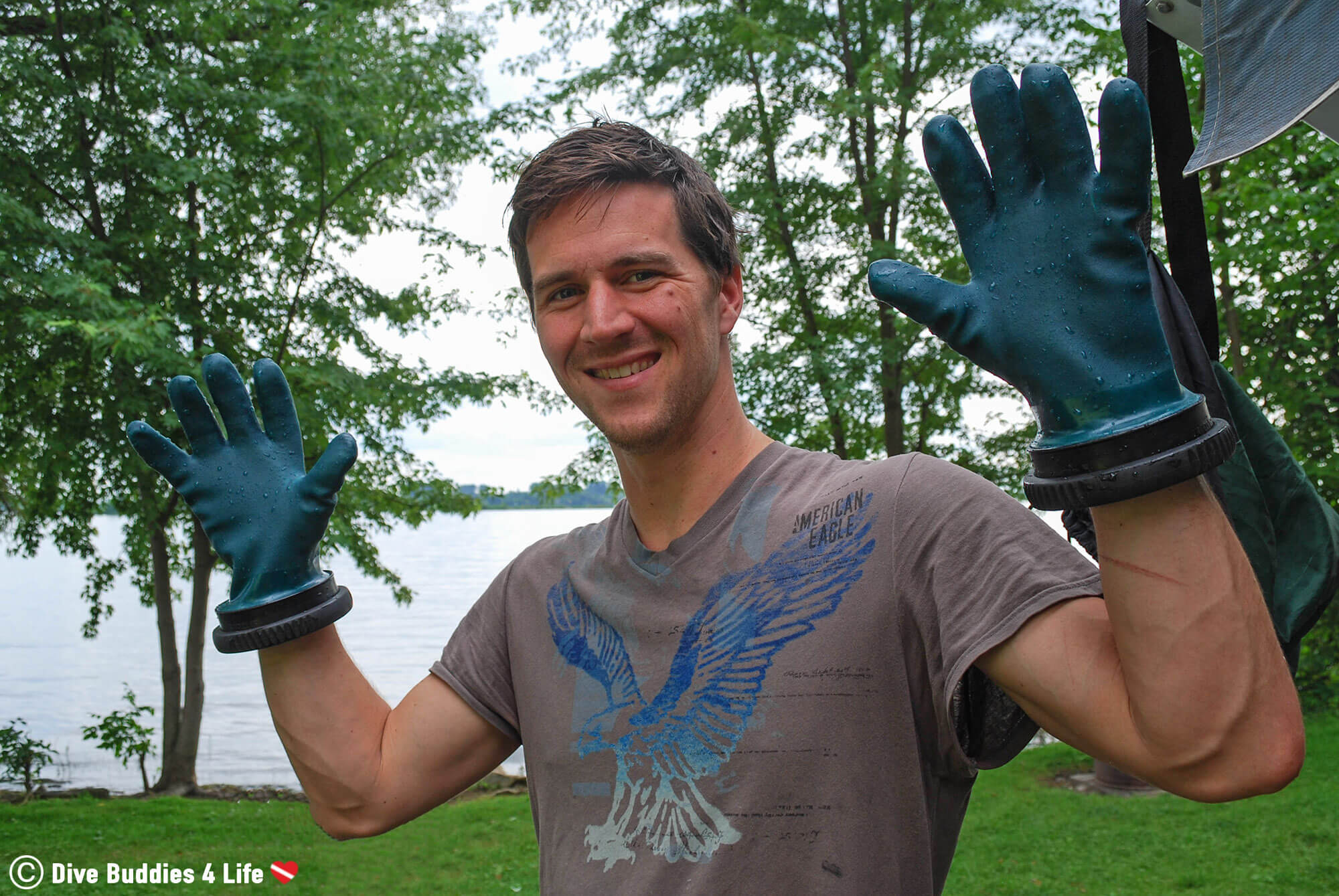
Exposure suits and gear play a huge role in staying warm while scuba diving, but there are also in water items to consider:
Dive Depth
Deeper water tends to be colder not just thanks to the thermocline but also because greater pressure compresses your exposure suit decreasing the size of the insulating bubbles in the neoprene. As an example, at only 10 meters (33 feet) the pressure is such that as much as half of your insulating bubbles have been taken for your exposure suit. Can you imagine how much insulation is left at 30 meters (100 feet)?
Stationary versus swimming
Moving around requires our muscles to create energy and this in turn emits heat. Therefore the amount of movement and swimming a diver undertakes on a dive will directly affect how warm they feel during a dive.
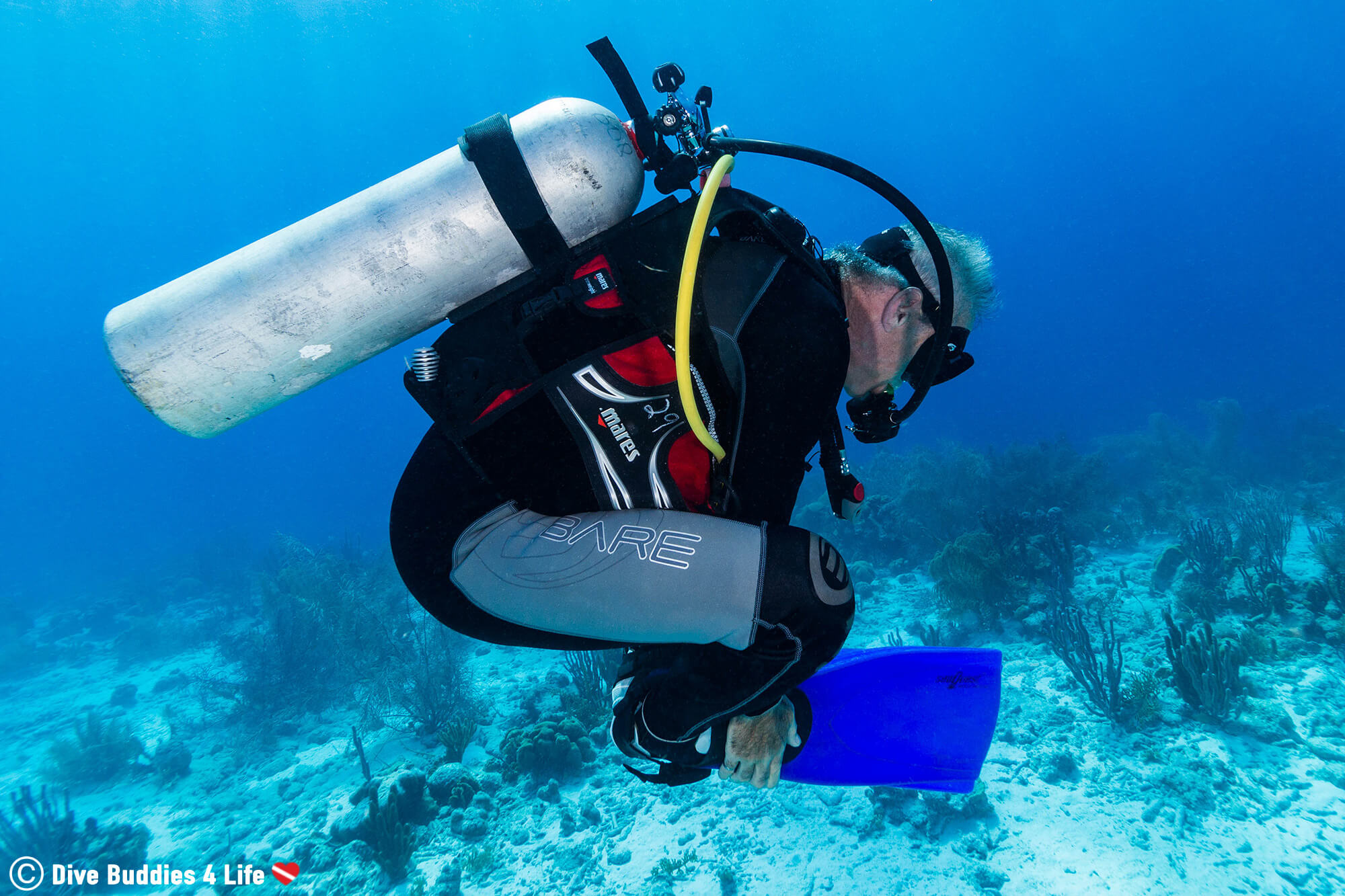
Staying warm during a dive is not just about the dive itself but also how a diver takes care of themselves throughout the day.
Staying warm before starting your dive means that you will take more heat into the water with you. Warm clothes including long pants, a jacket and toque are a good way to conserve heat pre-dive. Post-dive, or on your surface interval, try to peel back your wetsuit and dry off to prevent moisture evaporating away your heat.
Dehydration also impacts your body’s ability to keep warm. When a person becomes dehydrated their ability to regulate the body’s temperature is affected. Water, juice, hot drinks and even soups can go a long way to warming yourself up before, between and after diving.
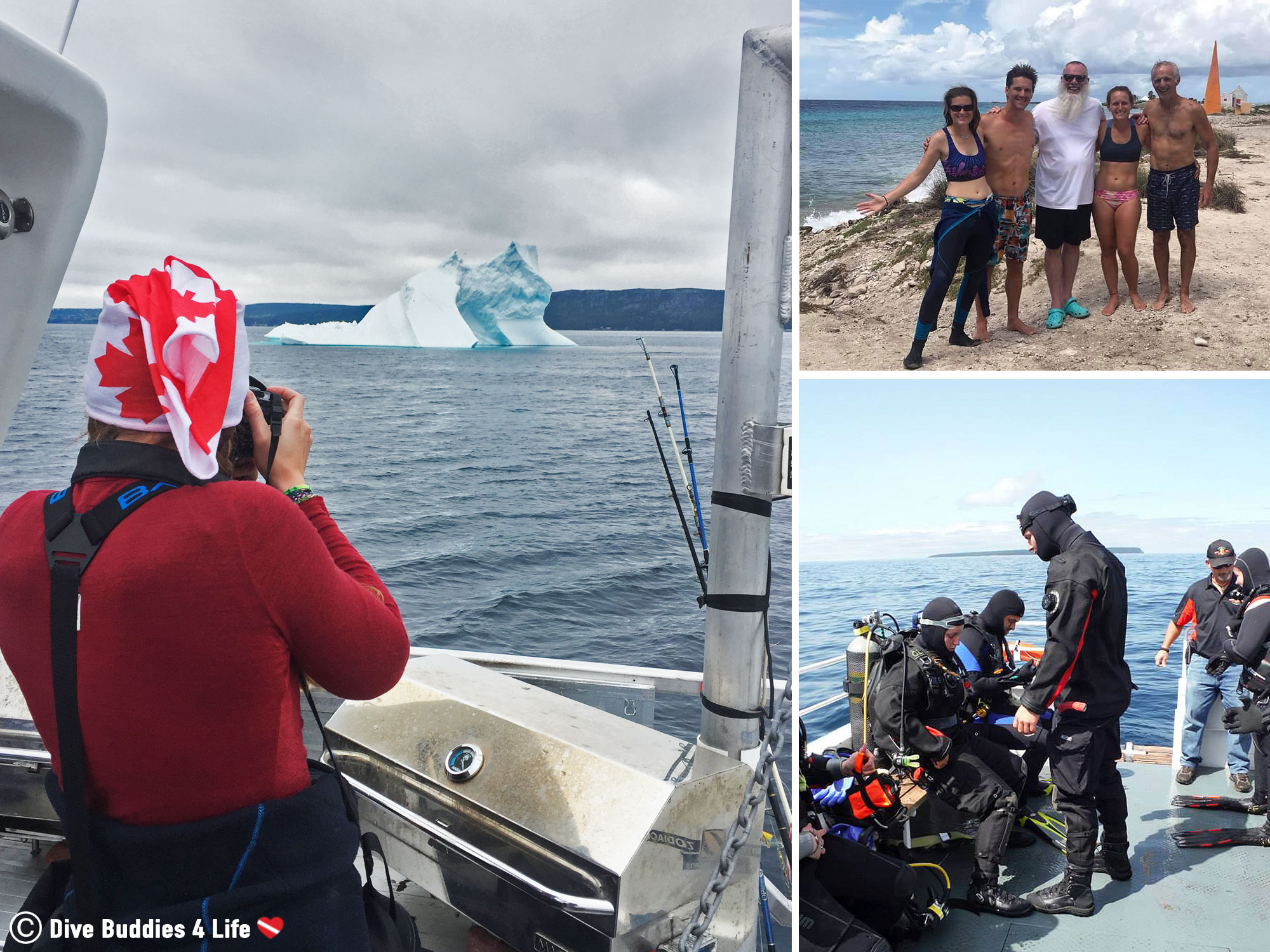
We are always looking for new ways to stay toasty. What kind of things do you do to stay warm while scuba diving? Leave us a note in the comments below.
Writers Note: This post may contain affiliate links. We will make a small commission if you make a purchase through one of these links, at no extra cost to you. See full disclosure and disclaimer policy here.


Dive equipment may be expensive, but new divers will find, there are many advantages to having your own set of scuba gear.
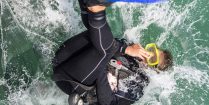
No matter what level of diver you are, scuba backroll entries are a fun-filled way to get off the dive boat and get into the water.

Are you a pig on air? You are not alone. Find out how you can get more out of your scuba diving tank.

Hair versus scuba, now that's a combination that doesn't mix. So how do you stay away from the tares, tangles and hours upon hours of post-dive hair brushing?
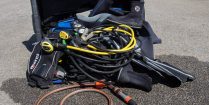
Everybody loves the idea of scuba diving, but the aspect of post dive cleanup is a much different story. It’s long, it’s tedious and it almost impossible to do it without getting wet - yet again.
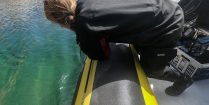
As a diver, sometimes you get hit with seasickness. Here are our solutions to dealing with seasickness before and during your dive.

Organizing a dive vacation can be a challenge. To help, keep these four questions in mind when planning your next scuba diving vacation.

Sometimes a dive doesn’t go according to plan and when that happens, it’s important to be seen. Learn all about surface markers and why you should have one.

It's not easy being green in a day and age where everything is plastic and waste. Let sustainability lead the way as you explore the underwater world.

Many scuba diving agencies that play a role in training divers. Here is a look at SEI, PADI, NAUI, and SSI, the top scuba agencies in the world.
